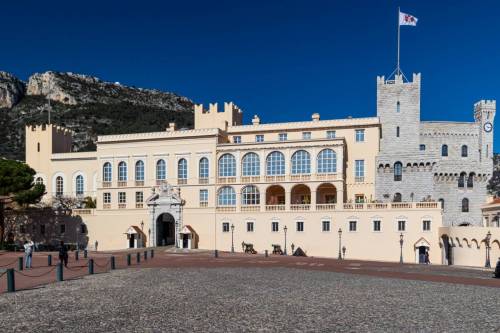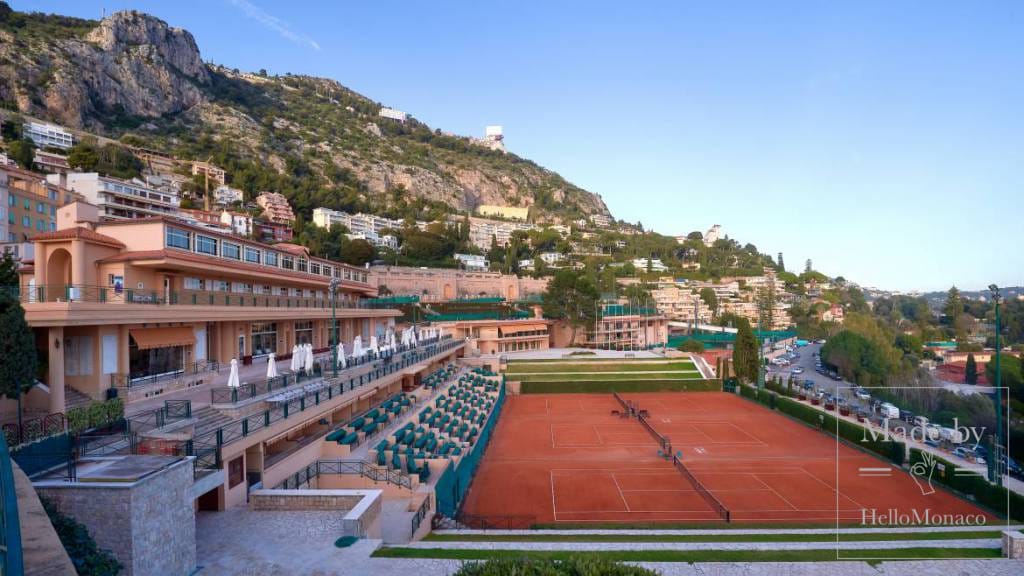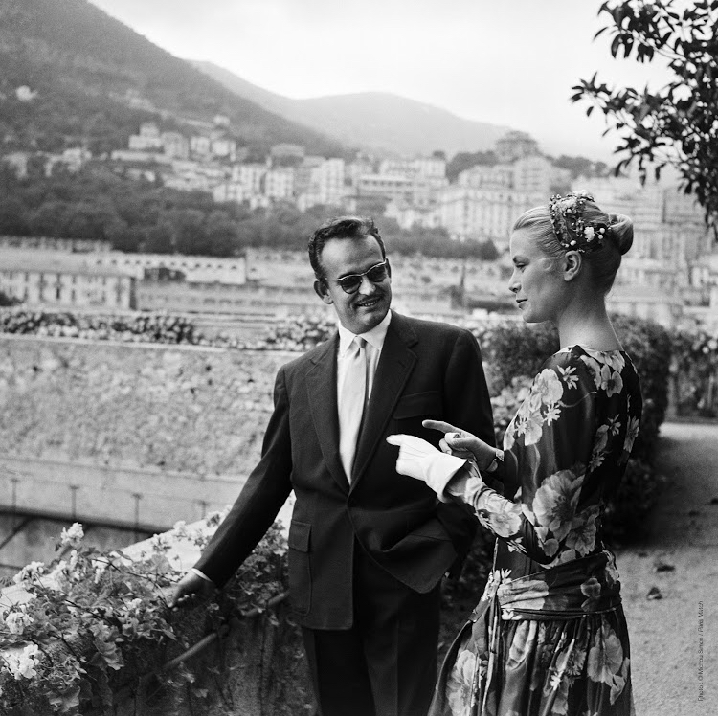Certain terrifying natural disasters turned out to be pivotal for the people. As the dictum goes “Every cloud has a silver lining” and in Monaco’s case perhaps even was an omen of divine intervention. The heavens themselves have appeared to play a saintly role in underpinning the Monegasques’ relationship with their Catholic faith.
The Miracle of Saint Devote
The most famous recorded “miracle” is the fourth century storm that drove the small sailing boat off course that was carrying the sacred remains of the Corsican Christian Devote who had been so cruelly tortured and slain by the Romans for her devotion to Christianity. According to a legend, Gabinius Barbarus Pompeianus, the governor of Corsica and Sardinia, ordered the girl’s body to be burned. He did not want it to become an object of veneration. The Christians, however, managed to save the body from the fire, put it in a boat and hastily sailed it off towards Africa. All of a sudden, a storm broke out on the sea, the boat went off course and wandered back to shore … That’s when another miracle happened: a dove flew out of the saint’s lips, showing the sailors the way. On January 27, 304, led by a snow-white dove, the fugitives managed to moor off a Monaco ravine (nowadays, the chapel of Saint Devote). Devote’s body then disappeared from the boat, but was later found by fishermen.
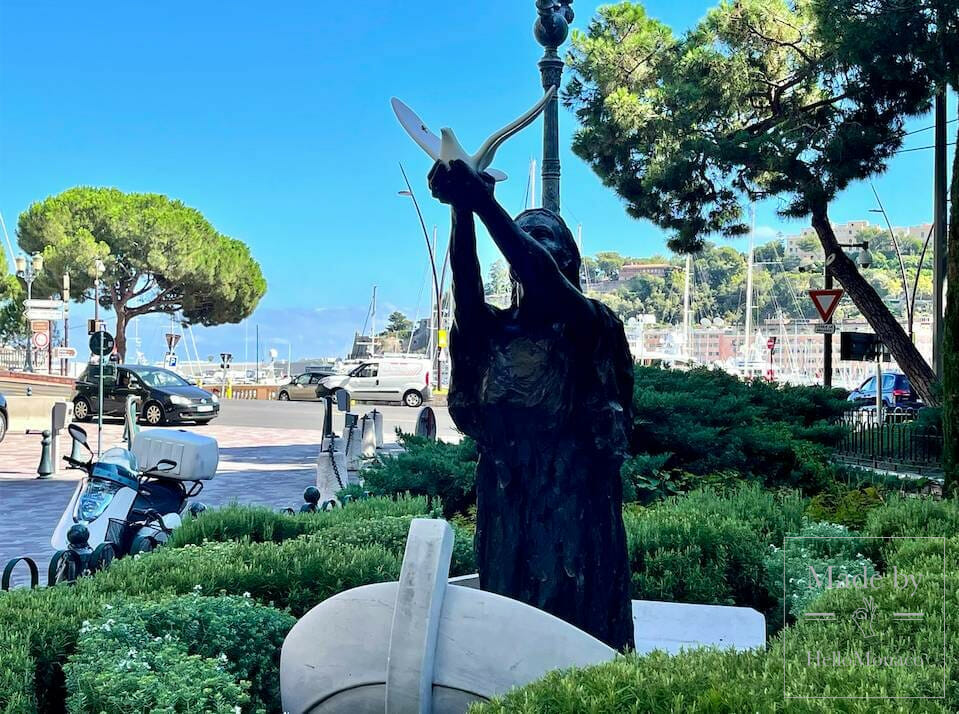
An attempt was once made to steal Saint Devote’s relics. Nothing short of a miracle also happened then. When the perpetrators’ boat was about to set off to escape, a strong wind arose preventing it from the slightest stirring. The locals, led by Ugo Grimaldi, then managed to get hold of the thieves and reclaim the sacred relic. That boat was burned to ashes right there and then. The Saint’s relics stayed with the Monegasques forevermore.
On January 26, in memory of this beautiful legend, a symbolic boat burning is held in front of the chapel of Saint Devote attended by the princely family members. This scenic ritual attracts a huge number of spectators. Saint Devote remains inseparable from the people of Monaco and the Grimaldi family.
Patron Saint of the Principality
It was the miraculous appearance of Sainte Devote who is said to have saved the day when an invasion of the Rock in the 16th century was assisted using a multitude of Corsican mercenaries in the invading force. During this war involving the Genoese and the Pisans, the enemies besieged the Monaco stronghold. For more than six months, their attacks were repelled by the Monegasques. It turned out to be a strategic mistake using Corsican mercenaries, though. As the legend goes the furious spirit of Sainte Devote, herself Corsican, turned the tide on the invaders with a rallying cry to her Monegasque patriots and a fearsome warning to the Corsicans who turned tail and fled. On March 15, 1507, the siege was raised.

The Patron Saint is much venerated by the residents and the Grimaldi family. All Catholic churches and chapels carry Saint Devote’s paintings and frescoes. Coins with her image have been minted since the mid-18th century. In 1927 Louis Notary wrote his very first novel in the Monegasque language called “The Legend of Saint Devote”.
The Chapel of Saint Devote, first mentioned in archives in 1070, was rebuilt and expanded several times over the centuries. In January 1998, a monument to Saint Devote with a dove in the palms of her hands, commissioned by Prince Rainier III, was built in front of the chapel.
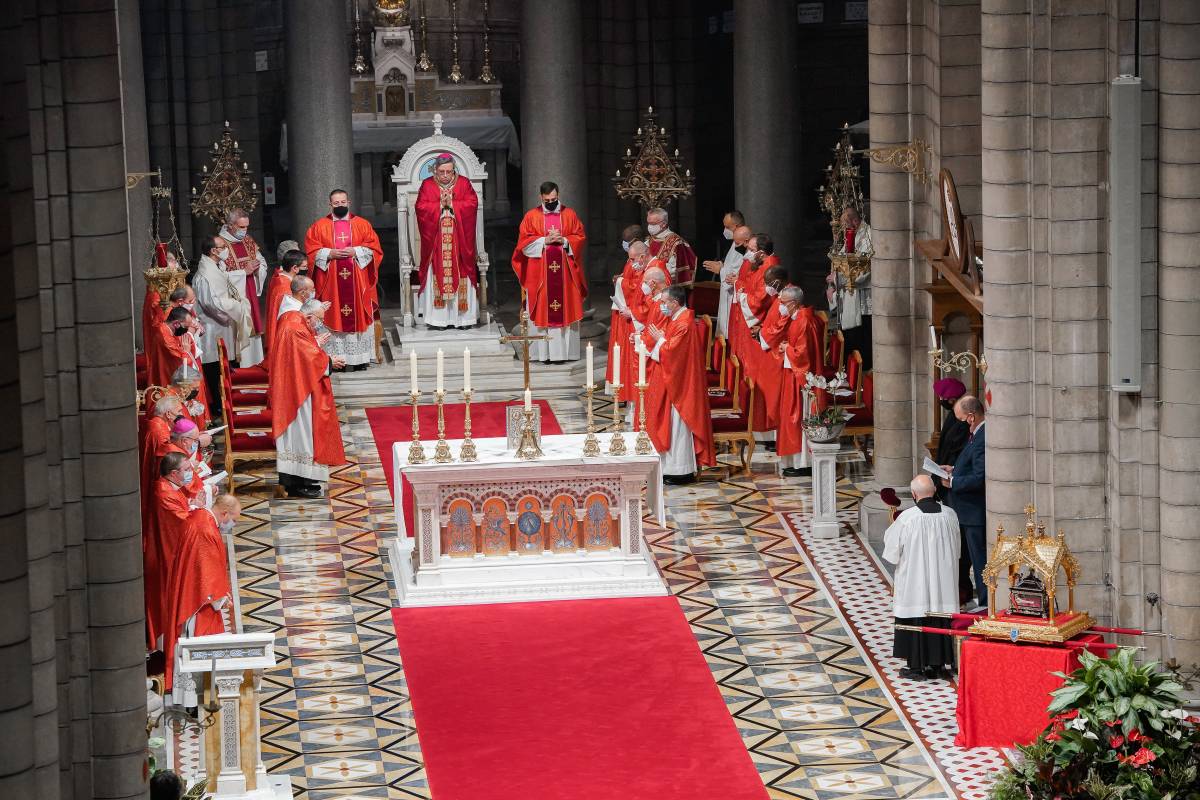
© Michael Alesi / Direction de la Communication
Saint Devote’s Day is celebrated annually for two days. On the morning of January 26, there is a Solemn Mass in Monegasque in her chapel. In the evening, a procession is crowned with a boat burning and fireworks in Port Hercule. On January 27, in the morning, another solemn Mass is held in the Principality’s main church, the Cathedral of St. Nicholas. In the afternoon, a procession with the Saint’s relics goes through the city streets.
Pope Pius VI Taken Prisoner by French Republicans
But did you know that the storm that initially brought Saint Devote to Monaco was not the only bearer of the holy spirit on the winds..? In 1802 it also brought the embalmed body of Pope Pius VI who similar to Sainte Devote had been persecuted, in his case, taken prisoner by the French Republicans. Pius VI had taken a bold stance against the French Revolution seeing it as a threat to Religious Authority. The Pope had condemned both the Declaration of the Rights of Man and the Civil Constitution of the Clergy in France and supported a league against the revolution. He issued two briefs — “Quod aliquantum” (1791) and “Caritas” (1791) — to condemn the ecclesiastical reforms that were proposed. It culminated in an official breach with France, particularly after the seizure by the revolutionaries of the Comtat Venaissin, ending 516 years of Papal rule in Avignon.
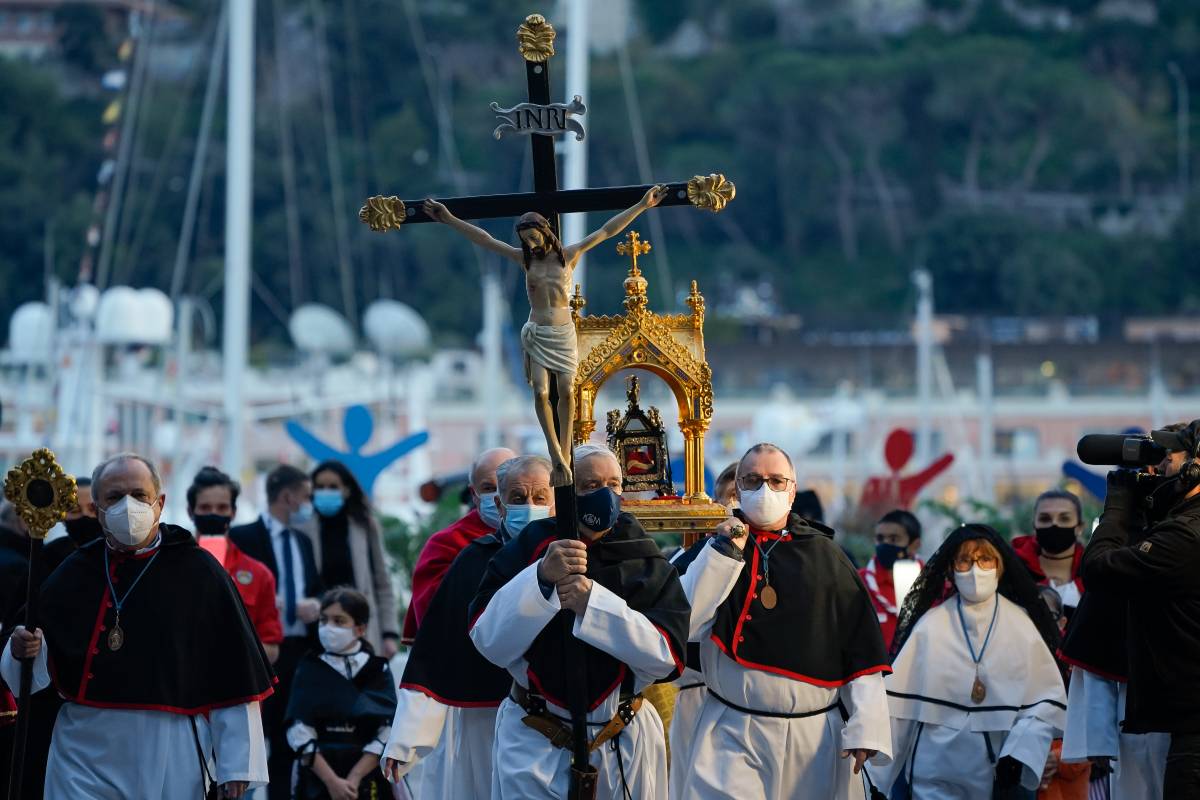
Pope Pius VI Borne To Monaco on the Wings of Fate
Pope Pius VI was caught on the wrong side of history and the thirst for power by Napoleon Bonaparte whose troops first invaded Rome in 1796. At first a truce was declared with Pius’ blessing. General Berthier later marched to Rome under pretext heading a second French invasion force and entered it unopposed on 10 February 1798. Proclaiming a Roman Republic, his demands of the Pope included the renunciation of his temporal authority. The aging pope refused to surrender his temporal powers and was captured, transported to France and kept prisoner in Valence. There, frail and weakened by the trip he died six weeks later on August 29, 1799, aged 81 and was unceremoniously buried locally. Pius VI had at that time reigned longer than any Pope.
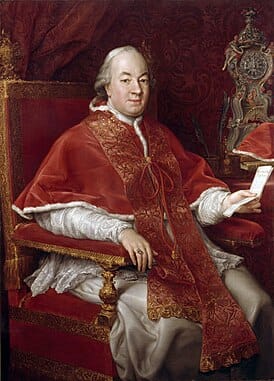
Pius VI’s body was embalmed, but had not been buried until 30 January 1800 after Napoleon saw political advantage to burying the deceased Pope in efforts to bring the Catholic Church back into France. Seeking a reconciliation with the Catholic masses Napoleon also agreed to moving the Pope’s body which had been buried ignominiously in France and he had it transported back to Rome by ship for a dignified burial in the Basilica in Saint Peter’s in Rome.
It was during this voyage that divine winds blew the ship off course and the captain sought refuge in Monaco.
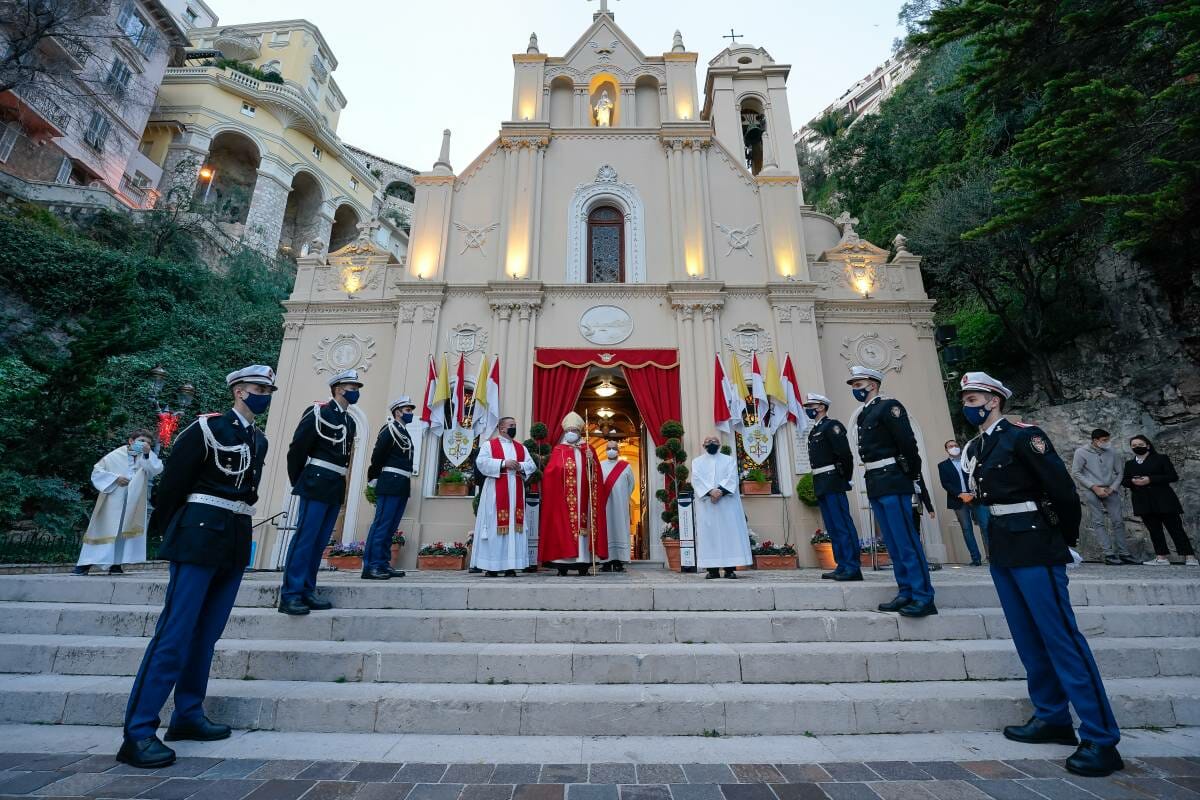
Monegasques Protect The Embalmed Body of Pope Pius VI
Monegasques revered the Pope and accorded him the respect due and temporarily guarded his embalmed body on the Rock in Saint Nicholas Church. This was the original Church of Saint Nicholas prior to it becoming the Cathedral that we know so well today. This afforded Monegasques the opportunity to demonstrate their affection for the Roman Catholic Church in taking care of the Pope’s remains before the ship could continue its journey to Italy.
There is a plaque dedicated to this divine event originally displayed with an inscription in the Church before it was torn down in 1874 to be replaced by today’s magnificent Cathedral where it can still be visited. The plaque reads: “The Sovereign Pontiff Pius VI having died in Valence in Dauphiné (Province), the boat carrying his remains to Italy was pushed by violent winds into Port Hercule. In pious recognition the Parish of Monaco erected this plaque on February 12th, 1802.”
And there is a beautiful fresco on the Chapelle Palatine recording the carriage of Pius VI’s embalmed body in his coffin into the Saint Nicholas Church.
The boat carried on with its course as soon as the wind calmed down, and Pius VI’s body was finally buried with dignity in Rome on 19th February 1802, when he was given a Catholic funeral, attended by Pope Pius VII, his successor.
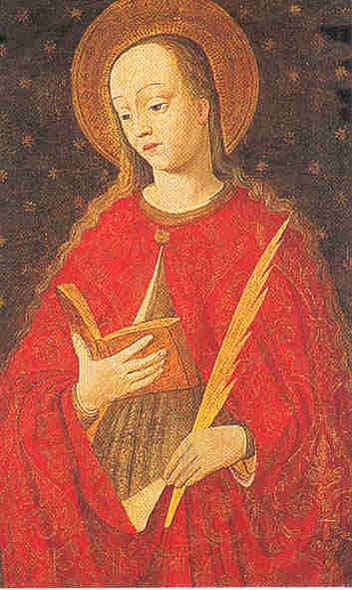
A Tale Of Two Plaques
Following Monaco’s plaque in 1802, currently on view in Saint Nicholas Cathedral on the Rock, it awaited well over a century for another very famous inscription to honour Pope Pius VI to appear in the Vatican grottos in Rome.
By decree of Pope Pius XII in 1949, the remains of Pius VI were moved to the Chapel of the Madonna below St. Peter’s in the Vatican grottos. His remains were placed in an ancient marble sarcophagus. The inscription on the wall above the container reads: “The mortal remains of Pius VI, consumed in unjust exile, by order of Pius XII are placed in this dignified and decorous location, illustrious for art and history, in 1949”.




